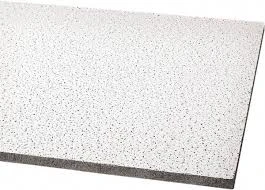Nov . 10, 2024 06:05 Back to list
Comparison of PVC Ceilings and Gypsum Board for Interior Design Choices
PVC Ceiling vs Gypsum Ceiling A Comprehensive Comparison
When it comes to interior design and construction, ceiling materials play a vital role in enhancing the aesthetics and functionality of a space. Two popular options frequently debated among architects, designers, and homeowners are PVC (Polyvinyl Chloride) ceilings and gypsum ceilings. Each of these materials possesses distinctive characteristics, advantages, and drawbacks, making them suitable for different applications. In this article, we will explore the key features of PVC and gypsum ceilings to help you make an informed choice.
Material Properties
PVC ceilings are made from a type of plastic, which makes them lightweight, flexible, and resistant to moisture. This attribute makes PVC ceilings particularly useful in areas with high humidity, such as bathrooms and kitchens. Additionally, PVC comes in a variety of colors and patterns, allowing for extensive design possibilities. The surface of PVC ceilings is smooth and easy to clean, making maintenance straightforward.
On the other hand, gypsum ceilings are constructed from gypsum board or plaster. They are known for their durability and fire resistance, making them a preferred choice in many residential and commercial buildings. Gypsum ceilings can also be finished with paint or texture to achieve a specific look. However, they are relatively heavier than PVC options, which can pose challenges during installation.
Installation Process
The installation of PVC ceilings is generally simpler and quicker than that of gypsum ceilings. PVC panels can be easily cut to size and affixed to existing structures with clips or adhesive. This ease of installation can significantly reduce labor costs and time, making PVC ceilings an attractive option for DIY enthusiasts.
Conversely, gypsum ceilings may require professional installation due to their weight and the need for a well-structured framework. The process can be more time-consuming, as it often involves measuring, cutting, and finishing the boards for a seamless appearance. As a result, the overall cost of installing gypsum ceilings can be higher due to both material and labor expenses.
pvc ceiling vs gypsum

Aesthetic Appeal
When it comes to aesthetics, both materials offer unique advantages. PVC ceilings are available in a wide range of colors, patterns, and finishes, including high gloss, matte, and wood-like designs. This versatility allows homeowners to creatively integrate PVC ceilings into various interior styles, from modern to traditional.
Gypsum ceilings, however, are typically praised for their elegant and sophisticated look. They can be designed with intricate moldings and can create a smooth, seamless surface that can be painted in any color to match the room's decor. For those who appreciate detailed craftsmanship, gypsum ceilings offer the possibility of incorporating decorative elements like coffered designs or other architectural features.
Cost Considerations
In terms of cost, PVC ceilings are generally more budget-friendly. Materials are often less expensive, and the reduced installation costs due to simpler processes can make a significant difference in the overall expense. This affordability makes PVC ceilings a popular choice for rental properties or budget-conscious renovations.
Gypsum ceilings, while typically more costly in material and installation, can offer better long-term value in terms of durability and fire resistance. If properly maintained, gypsum ceilings can last longer and withstand the wear and tear that may plague lighter materials like PVC.
Conclusion
Ultimately, the choice between PVC and gypsum ceilings depends on a variety of factors, including budget, desired aesthetic, installation capabilities, and the specific needs of the space. PVC ceilings stand out for their moisture resistance and ease of installation, making them suitable for humid environments and budget-conscious projects. Gypsum ceilings, with their superior durability and elegant appearance, are preferable for those willing to invest in a more substantial option that offers long-term benefits. When making your decision, consider both the practical and aesthetic elements to find the best fit for your design vision.
-
Quality Ceiling Trap Doors & Access Panels | Easy & Secure AccessNewsAug.30,2025
-
Durable Ceiling T Grid Systems | Easy InstallationNewsAug.29,2025
-
PVC Gypsum Ceiling: Durable, Laminated Tiles for Modern SpacesNewsAug.28,2025
-
Pvc Gypsum Ceiling Is DurableNewsAug.21,2025
-
Mineral Fiber Board Is DurableNewsAug.21,2025
-
Ceiling Tile Clip Reusable DesignNewsAug.21,2025







